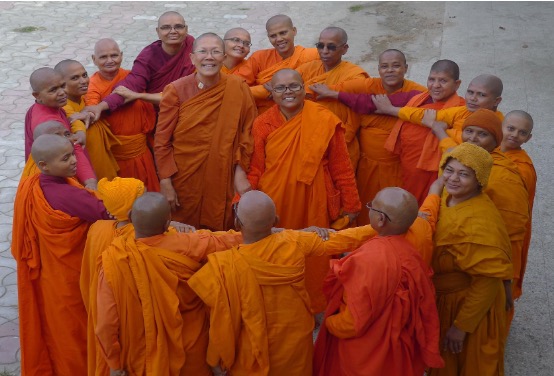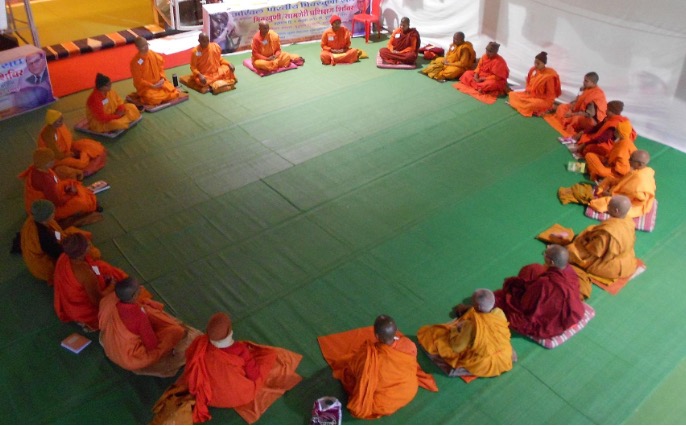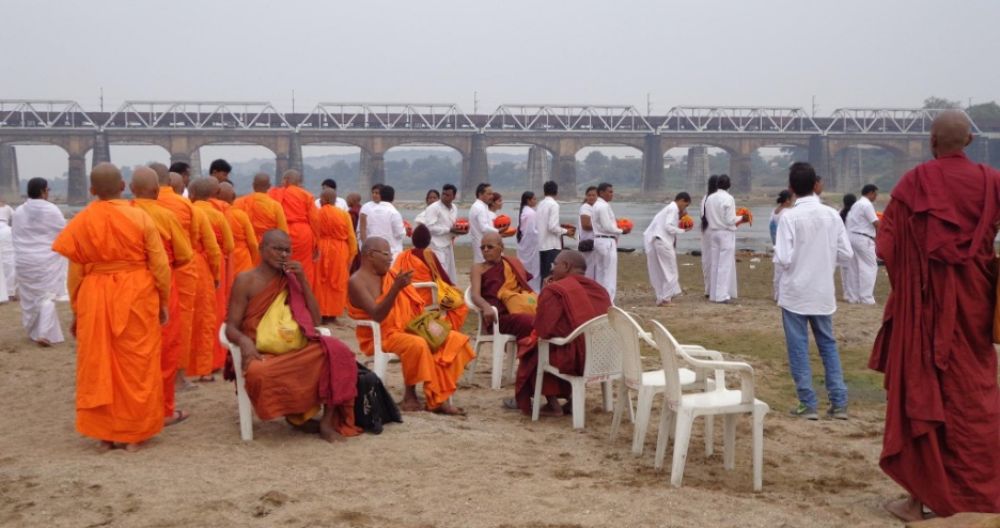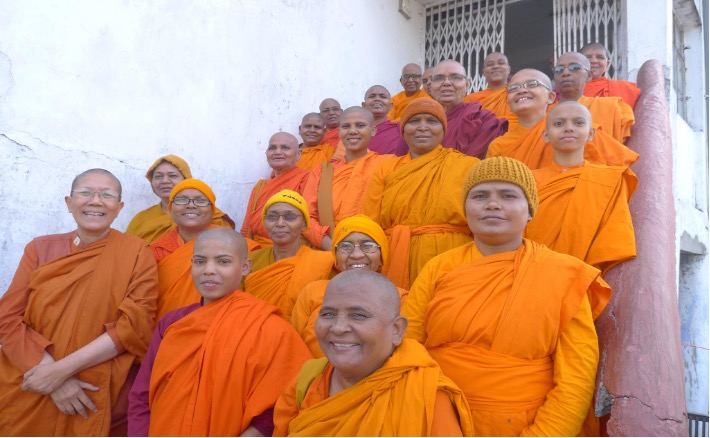In November 2013, a transformative event unfolded at the banks of the Kanhan River in Nagpur, marking a historic milestone for the Indian Bhikkhuni Sangha. With the 10th anniversary having passed on 24 November 24 2023, a commemorative event honored the bhikkhunis who have completed ten years since their higher ordination.
This pivotal moment challenged established norms and introduced innovative practices within the Bhikkhuni Sangha. Bhante Suniti Bhikkhuni, a key figure in orchestrating this higher ordination, shared anecdotes and experiences leading to this groundbreaking event.
Reflecting on the Bhikkhuni Upasampada in Bodh Gaya in 2009, Bhante Suniti Bhikkhuni recounted a conversation with Venerable Bhikkhuni Sama from Sri Lanka, who proposed offering robes and bowl with ordination but on terms to wear white clothes before the ritual. However, Bhante Suniti declined, expressing her reluctance to accept Upasampada with white clothes, considering it a step back from her current status as a samaneri.

Furthermore, she thought that since the Indian bhikkhunis had been ordained for more than ten years now, they too were eligible to ordain new bhikkhunis in India and there was no longer a need to depend on foreign bhikkhunis. Therefore, she decided to honor the senior Indian bhikkhunis, from the first batch of one’s to revive the Indian sangha after thousands of years, by requesting them to give upasampada (higher ordination).
It was decided to break this newly adopted tradition of donning white clothes, culminating in the groundbreaking ceremony on November 24, 2013. Rejecting this tradition was challenging as it marked the departure from newly adopted tradition, notably in the practice of wearing white clothes before Upasampada, a custom not historically observed. Even when the first Sanghanayaka Mahaprajapati Gautami went to the Buddha with 500 Sakya women to ask for admission into the Sangha, they all came wearing kasaya robes by themselves.
Several unprecedented elements distinguished this Upasampada program, setting it apart in modern India:

Mentorship and Empowerment: Bhikkhuni Vishakha Mahatheri, the first Bhikkhuni of modern India post 1956, was convinced to lead the initiation into Upasampada, instilling confidence in her role as a Uppajjhaya to new bhikkhunis. It was not an easy task as years of exclusion coming from a caste community and being woman neglected by men, also by bhikkhus in the monastic life, she was not able to muster her own morale earlier. But gathering all the necessary courage, this empowerment extended to other senior bhikkhunis, fostering a collective sense of purpose.
Comprehensive Training: A month-long training session preceding the program, conducted at Buddhabhoomi Vihar in Khairi, Nagpur, encompassed teachings on Upasampada procedures and Dhamma and Vinaya Pitaka teachings.
Diverse Trainer Panel: Eminent bhikkhus and bhikkhunis from India and abroad, including Prominent personalities like, Bhante Bhikkhu Satyapal Thero (head of the Department of Buddhist Studies at Delhi University), Bhikkhuni Dhammananda (the first bhikkhuni in contemporary Thailand), Bhikkhuni Vijjitananda from Vietnam, Bhikkhuni Punsirivara from Thailand. Along the way were Bhikkhuni Vishakha, Bhikkhuni Kammavachachara Shilachara and Bhikkhuni Suniti from India, who also served as trainers.

Unity and Tradition Revival: The training gathered more than 25 Bhikkhunis and Samneris from various parts of Maharashtra, fostering unity within the community. Additionally, the practice of Charika, rare in contemporary India, was revived as Bhikkhunis walked for alms daily. Post charika, daily sermons were given to the lay in their respective viharas building more connection within the upasak-upasika sangha and the monastics.
Support and Opposition: Despite opposition from some quarters of the Bhikkhu Sangha, the program successfully ordained 11 Indian bhikkhunis, marking a monumental achievement for the Bhikkhuni Sangha in India. Laypeople provided kind support wherever needed. Those blessed bhikkhunis were: Ven. Suniti, Ven. Sumedha, Ven. Vinaysheela, Ven. Katyayani, Ven. Shravasti, Ven. Dhammanaina, Ven. Shobhita, Ven. Mahaprajapati, Ven. Vidisha, Ven. Uruvela, and Ven. Sona.
On 24th November, some senior Indian bhikkhus were also invited to the Kanhan River where a seema(border of water) was set for the Upasampada ceremony as a tradition. Among the invited bhikkhus, Bhante Bhikkhu Sumedhabodhi Mahathero, Bhante Bhikkhu Dhammajyoti Mahathero, Bhante Bhikkhu Prajnasil Thero, Bhante Bhikkhu Vipassi Thero and Bhante Bhikkhu Vinayabodhipriya Thero were present, who also gave their important support and contribution.

Similarly, the first senior bhikkhuni Vishakha Mahatheri took charge of Upajjaya, Venerable Bhikkhuni Rupananda Mahatheri became Kammachara, associate senior bhikkhunis Ven. Bhikkhuni Shilachara Mahatheri, Ven. Bhikkhuni Satyasila Mahatheri, Ven. Bhikkhuni Shantashila Mahatheri, Ven. Bhikkhuni Sujata Theri, Ven. Bhikkhuni Sanghapriya Theri, Ven. Bhikkhuni Prajapati Theri, and Ven. Bhikkhuni Punasirivara marked their special presence.
As we celebrate the 10th anniversary of this historic event, we cannot help but be reminded that it stands as a testament to the resilience, unity, and progressive spirit within the Indian Bhikkhuni Sangha. Bhante Suniti Bhikkhuni’s vision and determination played a crucial role in challenging norms and facilitating the higher ordination, marking a defining moment in the modern history of Indian bhikkhunis.
Referenced from the Hindi book by Bhikkhuni Vijaya Maitriya, Bhikkhuni Sangha ka itihaas (History of the Bhikkhuni Sangha), 290-94.


